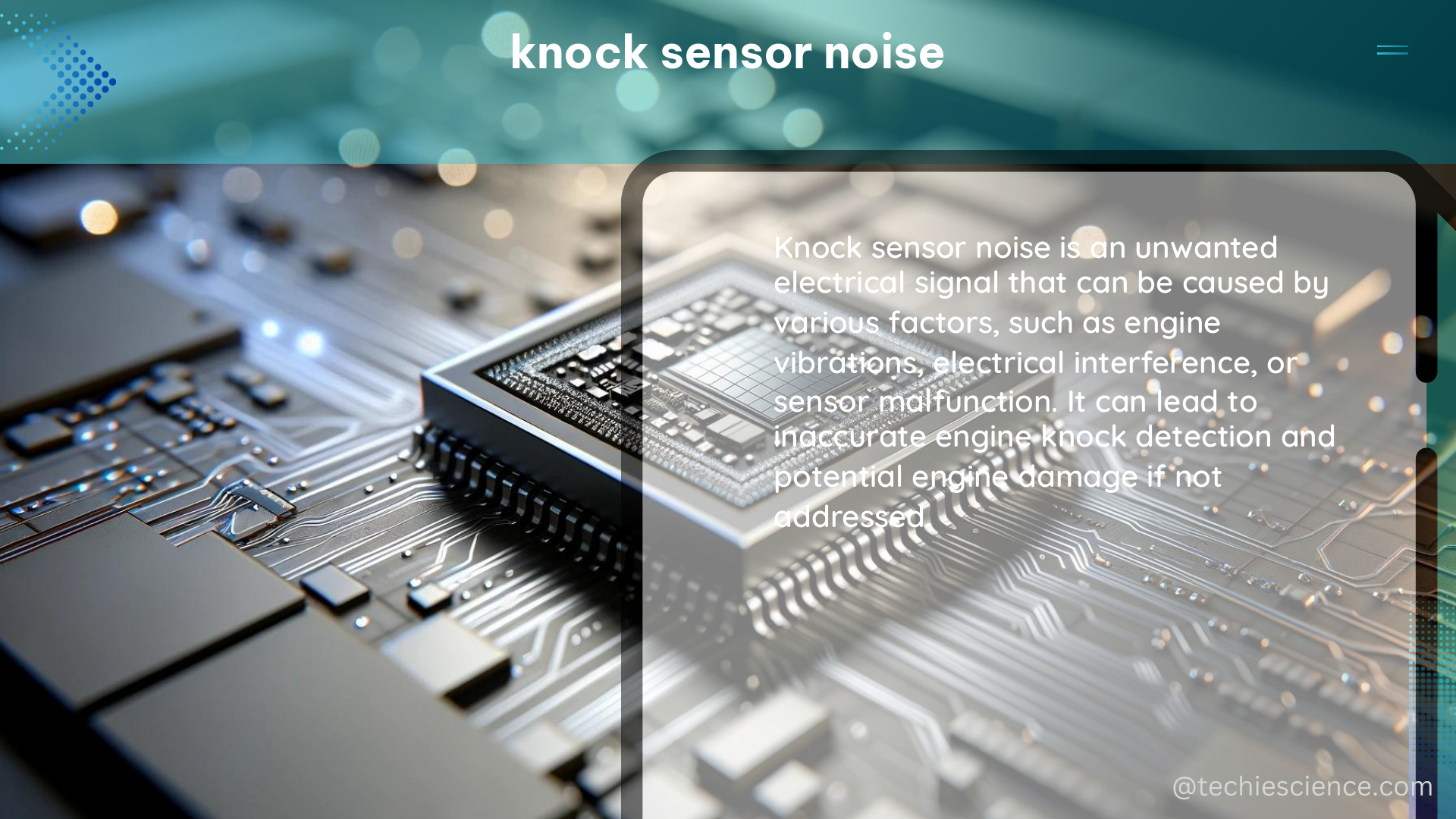Knock sensor noise is a common issue in internal combustion engines, which can be caused by several factors, including engine misfires, incorrect fuel-air mixture, and ignition system problems. The noise generated by the knock sensor can be quantified using various methods and tools, such as data acquisition systems, accelerometers, and signal processing techniques.
Measuring and Analyzing Knock Sensor Noise
According to a research paper titled “Analysis Techniques for Race Car Data Acquisition,” the knock sensor noise can be measured and analyzed using a data acquisition system that supports the CAN BUS protocol. The system can collect real-time data from the engine and chassis sensors, such as acceleration, velocity, and RPM, and transmit them to a central processing unit for analysis. The estimation of engine parameters, such as torque and power, can be performed using measured quantities, such as car mass and acceleration, collected in function of vehicle linear velocity.
The knock sensor noise can also be quantified using frequency-domain analysis techniques, such as Fast Fourier Transform (FFT) and power spectral density (PSD) estimation. These techniques can provide valuable insights into the frequency content and amplitude of the knock sensor signal, which can be used to diagnose and troubleshoot engine problems. For example, a high-amplitude peak in the PSD at a specific frequency may indicate a mechanical failure or a misfire in a particular cylinder.
Technical Specifications of Knock Sensor Noise

The technical specifications of the knock sensor noise can vary depending on the engine type, size, and configuration. According to a study titled “Data Determination of an Internal Combustion Engine for Model Set-up,” the knock sensor noise can have the following characteristics:
| Specification | Range |
|---|---|
| Frequency Range | 5-15 kHz |
| Amplitude | 50-500 mV |
| Duty Cycle | 5-50% |
| Duration | 1-10 ms |
These technical specifications can provide a baseline for understanding the characteristics of the knock sensor noise and can be used to diagnose and troubleshoot engine issues.
DIY Approach to Diagnosing and Fixing Knock Sensor Noise
To diagnose and fix the knock sensor noise, a do-it-yourself (DIY) approach can be taken using various tools and resources available online. Here are some steps you can follow:
-
Measure the Voltage and Resistance of the Knock Sensor: Use a digital multimeter (DMM) to measure the voltage and resistance of the knock sensor. This can help identify any wiring or connection issues.
-
Visualize the Knock Sensor Signal: Use an oscilloscope to visualize the waveform of the knock sensor signal and detect any anomalies or distortions.
-
Implement Noise Reduction Techniques: Add a noise reduction circuit, such as a low-pass filter or a noise gate, to the signal chain to reduce the noise level and improve the signal-to-noise ratio.
-
Analyze the Frequency Content: Use frequency-domain analysis techniques, such as FFT and PSD estimation, to analyze the frequency content of the knock sensor signal and identify any problematic frequencies.
-
Troubleshoot Engine Issues: Use the data collected from the above steps to diagnose and troubleshoot any engine issues, such as misfires, incorrect fuel-air mixture, or ignition system problems.
By following these steps, you can effectively diagnose and fix the knock sensor noise using a DIY approach.
Conclusion
The knock sensor noise can be quantified and analyzed using various methods and tools, such as data acquisition systems, accelerometers, and signal processing techniques. The technical specifications of the knock sensor noise can vary depending on the engine type, size, and configuration, and can be measured and diagnosed using a DIY approach. By understanding the characteristics of the knock sensor noise and implementing appropriate troubleshooting and noise reduction techniques, you can effectively address this common issue in internal combustion engines.
References
- “Analysis Techniques for Race Car Data Acquisition” – Academia.edu
- “2021 Owens Corning Sustainability Report” – Owens Corning
- “I got in trouble for using a mouse jiggler … despite my excellent work” – Ask a Manager
- “Administrative Changes to AETC TTP11-1, Employment … – Air Force”
- “Intracellular cAMP Sensor EPAC: Physiology, Pathophysiology, and …” – NCBI

The lambdageeks.com Core SME Team is a group of experienced subject matter experts from diverse scientific and technical fields including Physics, Chemistry, Technology,Electronics & Electrical Engineering, Automotive, Mechanical Engineering. Our team collaborates to create high-quality, well-researched articles on a wide range of science and technology topics for the lambdageeks.com website.
All Our Senior SME are having more than 7 Years of experience in the respective fields . They are either Working Industry Professionals or assocaited With different Universities. Refer Our Authors Page to get to know About our Core SMEs.